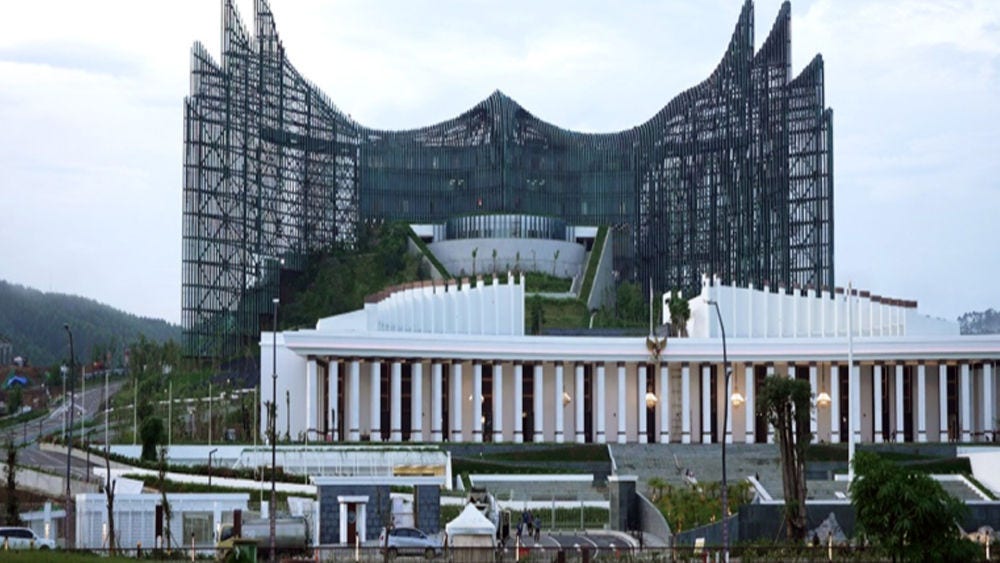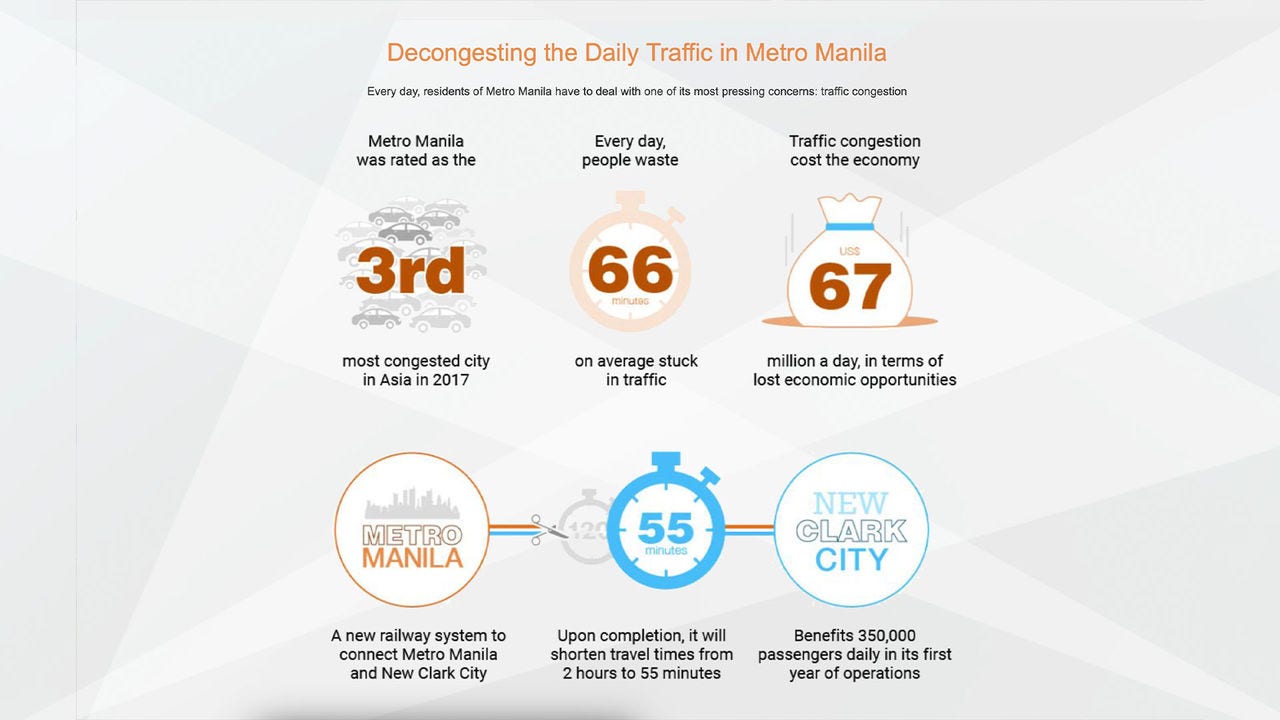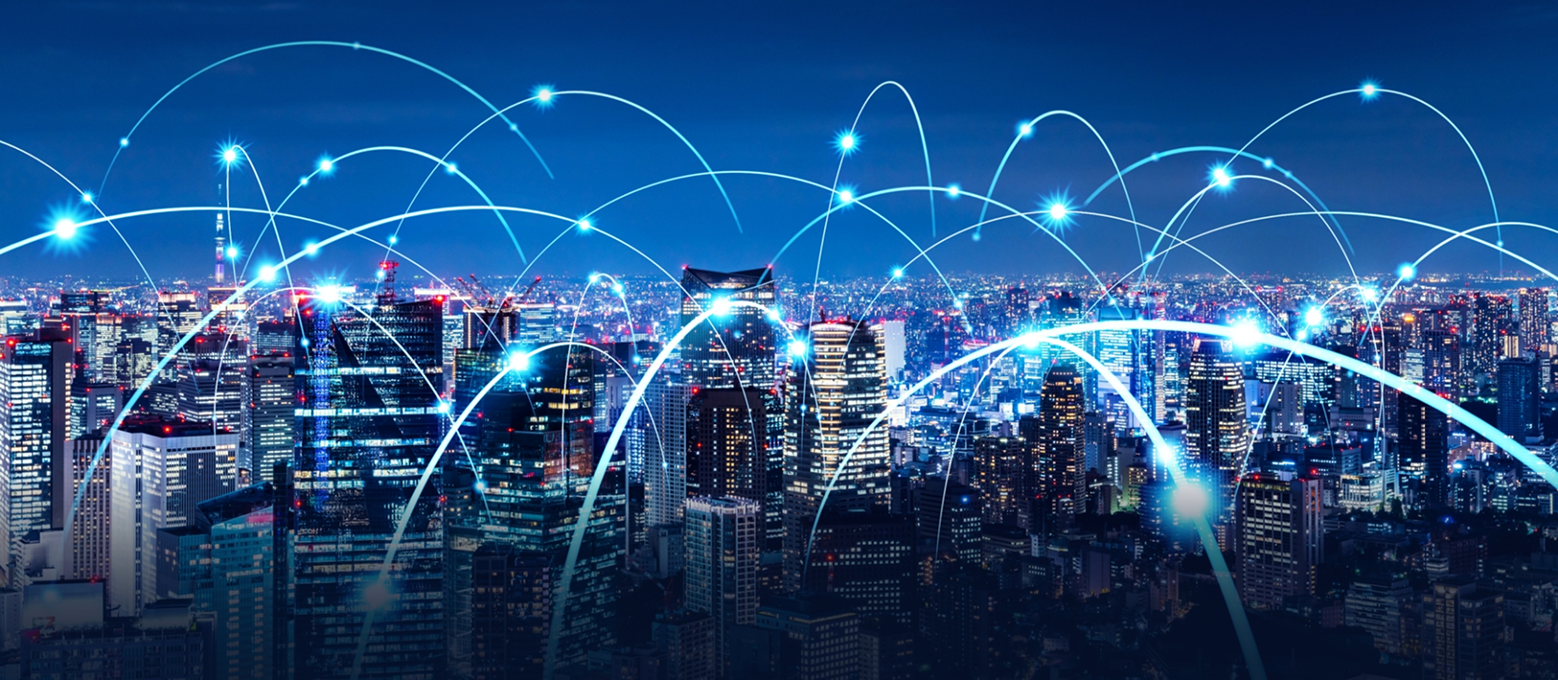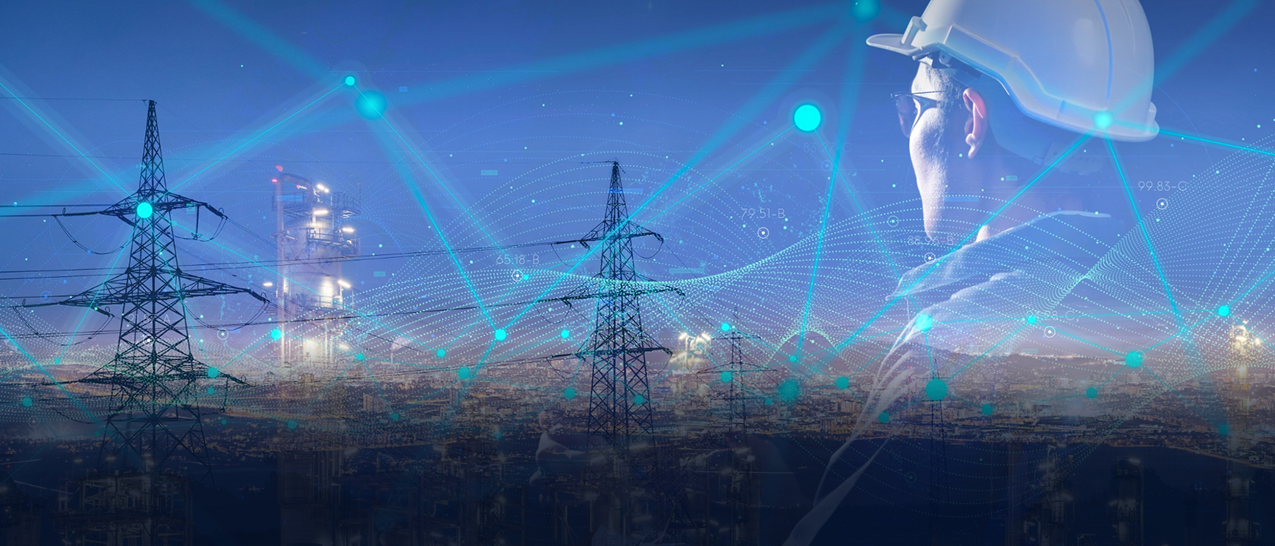
For a Sustainable Future in Southeast Asia
With decades of experience in Southeast Asia, Hitachi believes it can play a leading role for the environment, through the use of future-ready and nature-ready technology.
A Future with Nature in Mind
- Singapore
- Malaysia
- Indonesia
- Thailand
- Vietnam
- Philippines
- Myanmar
Singapore is fully committed to the UN's 2030 Development Agenda and has one of the most ambitious plans for a sustainable future in Southeast Asia. As Singapore has limited renewable energy options, it is focusing its efforts on other sustainable approaches, such as optimising the energy usage of its urban environment.

At a glance
Buildings in Singapore generate over 20% of the nation's carbon emissions. This explains the government's decision to green 80% of its buildings by 2030.
How Hitachi helps
To do so, the government has commissioned Hitachi to build the Super Low Energy Building (SLEB) Smart Hub, a digital platform that captures data on energy performance of buildings and green building technologies such as air-conditioning, lighting, facade and renewable energy. The Smart Hub also features big data analytics and artificial intelligence techniques to make smart recommendations for building owners to save energy and reduce energy wastage.

At a glance
Energy Grid 2.0 is the Singapore government's flagship initiative at shaping a next-generation power grid system. One of the key objectives of Energy Grid 2.0 is to devise a single intelligent network that is more efficient, sustainable and resilient.
How Hitachi helps
Enter solid state transformers, multifunctional devices that allow users to control the amount of power distributed to the networks. With solid state transformers, the grid no longer needs to house multiple equipments, which in turn lowers land usage, an important consideration in land-scarce Singapore.

At a glance
The InterContinental Hotel in Singapore is well-known for winning multiple hospitality awards. What's less well-known is their management's commitment to upgrade its power infrastructure to be future-ready.
How Hitachi helps
Having taken up Hitachi's recommendation to adopt the TXpertTM Enabled Dry distribution transformer, the hotel can now tap on an open, scalable and manufacturer-agnostic ecosystem for its power usage. With the array of onboard sensors and data analytics, the new asset is expected to see a drop of 40% in failure rate and an increase in life expectancy by 50%.
At a glance
As one of the newest bus operators in Singapore, Go-Ahead manages 31 bus services with the help of more than 1,000 employees. To effectively manage its fleet of buses, Go-Ahead relies on big data to measure and improve its operational efficiency.
How Hitachi helps
Go-Ahead has asked Hitachi to build a fully customised portal to house its operational data. Combined with analytical tools, Go-Ahead staff is able to make data-driven discoveries to identify service issues and resolve them quickly. Bus scheduling has also improved, which results in a smoother service experience for its customers.
Malaysia has taken a sustainable consumption and production approach when it comes to managing climate change. This approach has resulted in a green market, a holistic manner for waste management and increased share for renewables in the energy mix.
As the world's fourth-most populous country, Indonesia has grown its economy with high levels of resource extraction and heavy reliance on coal-burning. However, Indonesia is blessed with enormous reserves of renewable energy and the government has taken concrete steps to integrate them into its energy mix.

At a glance
Digitalisation is playing a key role in power systems and achieving a sustainable energy future in Indonesia. This is especially true in East Java, where Hitachi Energy has delivered a 150kV digital substation to Indonesian utility PT Perusahaan Listrik Negara.
How Hitachi helps
With the digital substation, operators can access real time data about the flow of electricity in the network, making it more stable and resilient. The digital substation also supports Indonesia's transition to a low-carbon future by seamlessly integrating renewable energy into the electricity network.

At a glance
The Indonesian archipelago is one of the most seismically active regions in the world. Prone to earthquakes and volcanic eruptions, it is also a reservoir of geothermal power resources, at an estimated 40% of the world's geothermal potential. The Indonesian government is planning to tap into this by raising the geothermal share of its fuel mix from 5% to 9.8% in 2027.
How Hitachi helps
To harness geothermal power on Sumatra island, Hitachi Energy will supply a prefabricated substation to connect to the new geothermal power plant near Rantau Dedap. The plant will provide 220MW of carbon-free electricity - enough to power almost 500,000 local homes.

At a glance
Ibu Kota Nusantara, Indonesia's first smart and eco-friendly city, targets zero emissions by 2040. In March 2024, Phase 1 synchronisation between a solar power plant and the electricity transmission network was successfully implemented. Hitachi Energy supplied Gas Insulated Switchgears and state-of-the-art digitalization to support reliable, sustainable energy delivery.
How Hitachi helps
With close to 50 years in Indonesia, Hitachi Energy brings vast experience and insights into the nation's energy system. Using cutting-edge technology and ASEAN synergies, it supports integration of solar, wind, hydro, and geothermal power—helping IKN drive Indonesia’s energy transition toward becoming a smart, eco-friendly, zero-emission capital city.

Thailand has a homegrown approach to sustainable development. Named as the Sufficiency Economy Philosophy, it represents a shift towards a balance for all things, including interaction with nature, economic growth and safety for the Thais.

At a glance
Thailand's Ministry of Energy is looking to build a smart grid system for balancing power during power shortage and reducing its greenhouse gas emissions by tapping into renewable energy. To do so, they are using a pilot project as a base for the system, which can accommodate for more sources of renewable energy and improve the operations of its power distribution facilities.
How Hitachi helps
Hitachi will be deploying its demand response management system in this project. Through these IT technologies, Hitachi is able to provide a system that manages demand side, as if they were a single virtual power plant. This allows the system to optimize its power supply and demand balance effectively.

At a glance
Thailand is aiming for a share of 50% for renewable sources in its power generation capacity by 2037. One possible source of renewable energy is solar power, which is likely to see greater demand in the near future.
How Hitachi helps
To jumpstart this trend, Mitsubishi HC Capital (Thailand) (previously Hitachi Capital), Hitachi Asia (Thailand) and SANTEC collaborated to install solar self-consumption equipment for the Hitachi Group in Thailand, with a target to achieve a power generation capacity of 10MW by 2023. Using this experience, these three companies hope to bring solar power into the mainstream for other companies in Thailand and help to lower greenhouse gas emissions for the country.
At a glance
E-commerce has led to tremendous growth in Thailand's logistics sector. Such explosive growth has implications for sustainability, as the transport sector accounts for the second largest emission of greenhouse gases.
How Hitachi helps
This is where Hitachi's Vehicle Sharing Service comes into play. With a live-tracking system, it enables companies to find and reserve vehicles for their logistics use. This service will lead to a more optimised logistics system, where there will be lesser empty trucks on Thai roads. This will help to reduce traffic congestions and lower carbon emissions.

At a glance
The Betong district in Thailand's Yala province is a valley surrounded by mountains, with power lines passing through forested areas. Tree damage often cause interruptions, outages and reduced power quality.
How Hitachi helps
Hitachi Energy stepped up to help by developing an advanced digitally-driven microgrid solution. This will help to identify the root cause of power outages and bring about a secure power network to the region. In addition, it will help to manage power demand, reduce power losses and lower the greenhouse gas emissions.

At a glance
SCG Cement-Building Materials is a leading manufacturer of cement and building materials. The company has been pushing to increase its operational efficiency and lower its energy usage when it comes to daily manufacturing activities.
How Hitachi helps
At their cement factory in Thung Song, they have integrated Factory Simulator, a component of Hitachi's Lumada. The Factory Simulator will cross-analyse multiple sets of data and develop an optimal production plan for the entire factory, as well as helping to lower energy usage. It will also devise a delivery plan for the company to reduce logistics costs and lower its carbon emissions.

At a glance
Bangkok is infamous for its traffic congestions, where vehicle exhausts have been causing serious environmental problems in terms of air pollution. Urban planners have turned to advanced transit systems to alleviate its congestion burdens.
How Hitachi helps
One such system is the Bangkok Red Line Project. This project is constructed as a fully elevated rail system, linking Bang Sue Grand Station to the North Line and the West Line. Hitachi, in collaboration with Mitsubishi Heavy Industries and Sumitomo Corporation, have supplied 25 train sets for this project.

Vietnam is facing an alarming rate of environmental damage and resource depletion due to climate change. It is forecasted that climate change and natural disasters will cost up to 11% of Vietnam's GDP by 2030. To mitigate this, the government has set in place a vision to restore the environment by 2050.

At a glance
Ho Chi Minh City is plagued by daily traffic congestions, costing the city between US$820 million and US$1.2 billion a year. This has huge implications on air pollution and carbon emissions. Various options such as elevated roads, changing major streets into one-way streets and even banning private vehicles in downtown areas have been considered.
How Hitachi helps
Hitachi is one of main contractors participating in the construction of the first metro line in Ho Chi Minh City. Named Line 1, the metro connects the centre of Ho Chi Minh City with its Northeast gateway. As the first of many, Line 1 will play a critical role in relieving the congestion and help to lower the carbon emissions in the city.

Ranked number one for environmental sustainability by the World Energy Council in 2018, the Philippines has been devoting efforts to adopt renewable energy since 2001. Geothermal, solar, wind and hydropower are four of its most widely adopted sources of renewable energy.
At a glance
The Philippines is considered a world leader when it comes to renewable energy. However, renewable energy, especially solar power, fluctuates throughout the day. It is vital to look for a way to store the energy so it can be used later.
How Hitachi helps
Hitachi and Manila Electric Company have installed a 2MW battery-energy storage system in Bulacan. Modular and movable in 40ft containers, these batteries offer stability for renewable energy sources. This allows for the management of peak demand and energy, improved service reliability and power quality, and compensates for the intermittency of renewable energy generation.

At a glance
To improve their power distribution, Meralco built a new 230/115 kV GIS substation in 2008. However, Meralco wants to develop a smart grid with digital substations to make their network safer and easier to maintain.
How Hitachi helps
Hitachi Energy was asked to supply automation systems for the substation. The system pairs state-of-the-art technology with a team of trained and experienced engineers. This allows Meralco an enhanced life cycle management of its substation, as well as reduced operational and maintenance costs.

At a glance
The Philippine government is aiming for an installed renewable power base of 20GW by 2040. They plan to do so by upgrading the Magat-Santiago transmission line to ensure full dispatch of the Magat hydropower plant in Ramon.
How Hitachi helps
In collaboration with AboitizPower and Scatec, Hitachi Energy will be helping by building a battery storage system, set to go online in 2024. The battery energy storage system has the potential to expand to 24MW and is expected to be used primarily for ancillary services but will also dispatch to the grid at peak times.

At a glance
New Clark City, a smart city just 80km away from Metro Manila, is tapping into a smart management system to ensure self-sustainability for its power, water and waste management facilities.
How Hitachi helps
To do so, Hitachi is helping to provide a Smart Grid solution, where power distribution will be allocated automatically by channeling extra power to areas with higher demands. Hitachi has prior experience of implementing an Area Energy Management System in Kashiwa-no-ha, a smart city in Japan, which offers efficient use, monitoring, and control of energy in the development.

As a developing country, Myanmar faces multiple challenges to grow its economy and improve the quality of living for its people. However, it recognises the danger of unsustainable development and has sought to align with the sustainable development goals put in place by the UN.
Hitachi Commits to Become a Sustainable Company
Inspired by the vision of a low-carbon, resource-efficient society co-existing in harmony with nature, Hitachi is taking concrete steps to achieve its long term environmental targets for 2030 and 2050.
Towards a Zero-Carbon Society in Southeast Asia
Hitachi is taking concrete steps towards a zero-carbon future in Southeast Asia.
Hitachi Sustainability Reports
Since 2018, Hitachi has been publishing a Sustainability Report every year. The reports explain in detail how Hitachi is aligning itself to meet the Sustainable Development Goals set by the United Nations.
Date of Release : September 2022
Date of Updated : July 2025
















